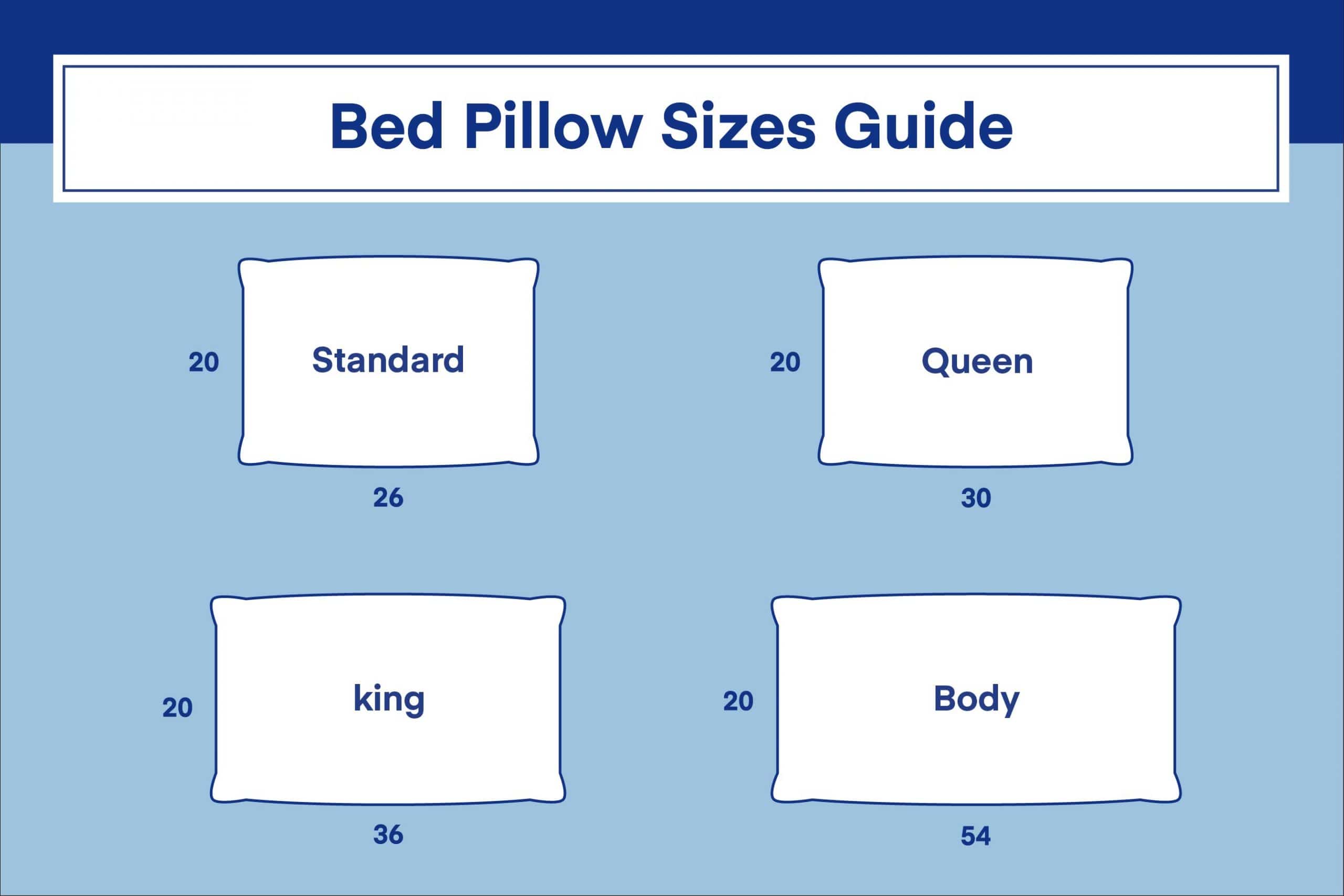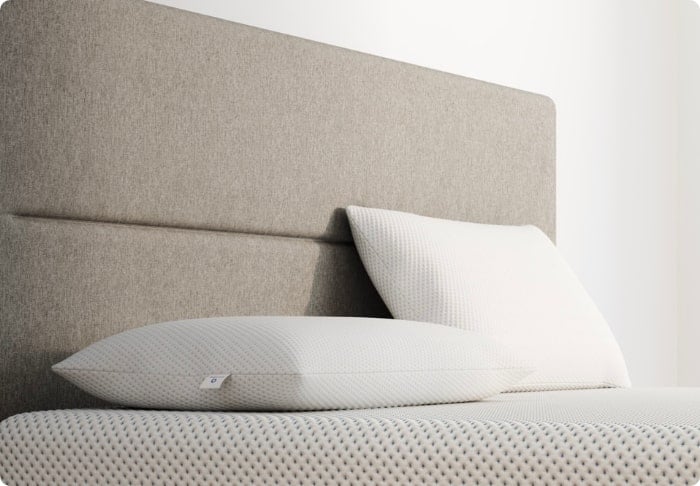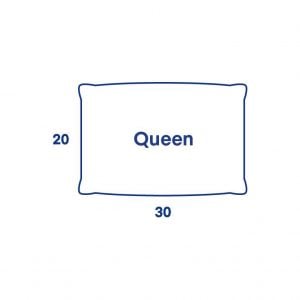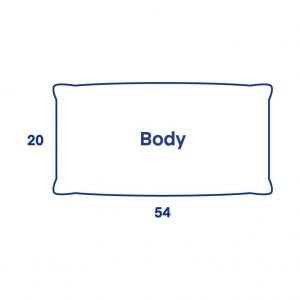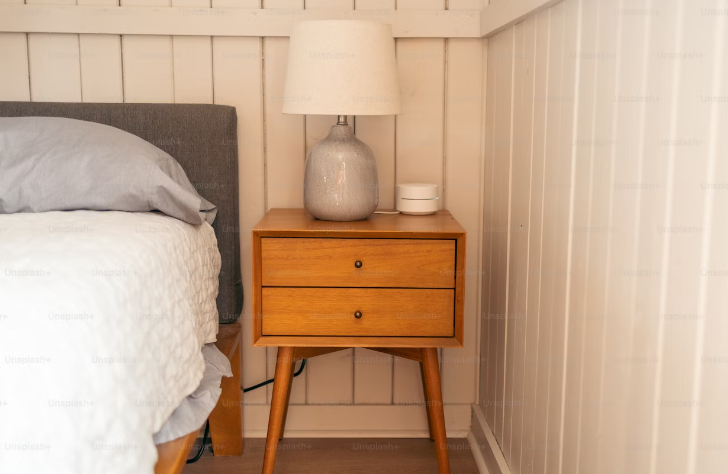Key Takeaways
- Picking the Right Bed Pillow Size: Choosing the right pillow size is essential for a comfortable night’s sleep, and it depends on factors like your sleeping style and bed size.
- Range of Bed Pillow Sizes: Pillow sizes range from standard, queen, and king to body pillows, and each serves a unique purpose. Standard pillows are suitable for those who don’t shift positions during the night, while larger pillows like queen or king are great for restless sleepers.
- Choosing a Comfy Pillow Loft: The loft, or thickness, of your pillow should be chosen based on your sleeping position. Side sleepers benefit from high-loft pillows, back sleepers from mid-loft, and stomach sleepers from low-loft options for proper support and spinal alignment.
Once you’ve found the best mattress for yourself, you need to find bed pillows to complement it. Pillows complete the look and feel of your bed. They enhance your sleep, providing the required balance of comfort and support to your head and neck region. Sleeping pillows come in different sizes to suit different needs.
How do you decide which size is best for you? It isn’t as simple as matching the size of the pillow to your mattress size. In this guide, we discuss in detail different sleeping pillow sizes and how they can affect your sleep.
Bed Pillow Sizes Chart
Bed pillow sizes are broadly categorized under standard, queen, king and body pillows. However, there may be some sub-categories with minor differences in pillow dimensions.
| Pillow Size | Measurements (Inches) | Measurements (CM) |
|---|---|---|
| Standard | 20 inches by 26 inches | 51 CM by 56 CM |
| Queen | 20 inches by 30 inches | 51 CM by 76 CM |
| King | 20 inches by 36 inches | 51 CM by 92 CM |
| Body | 20 inches by 54 inches | 51 CM by 137 CM |
Standard Size Pillow Dimensions
A standard pillow measures 20 inches by 26 inches. It’s a compact size perfect for sleepers who don’t change sleeping positions through the night. If you are a combination sleeper who tosses and turns in bed while sleeping, you may slide off the pillow, causing neck aches. However, if you are a side sleeper, back sleeper, or stomach sleeper, a standard size may be perfect for you.
One standard size pillow fits across a twin bed comfortably, while two can be placed across on a full and queen bed. However, to cover the width of a king or California king bed, you’ll need three standard pillows.
Some bedding companies have another subcategory called the super standard, measuring 20 inches by 28 inches. The width remains the same, but you get extra 2 inches in length. Since it’s a minor difference, both the pillow sizes can be fitted inside a standard pillowcase, measuring 20-21 inches by 30-32 inches.
Queen Size Pillow Dimensions
The standard size of a queen pillow is 20 inches by 30 inches, but there may be slight variations in dimensions depending on different brands. The extra length of a queen compared to a standard or super standard is beneficial for restless sleepers.
A queen size pillow fits snug in a standard pillowcase. Some bedding manufacturers may have other sizes, but a standard and king are popular pillowcase sizes.
A queen pillow can be placed across a twin, and two quen size pillows fit perfectly across a queen-size bed. You can place two queen pillows tightly across a full, while on a king or California king they can be placed comfortably across the bed with extra space in between.
King Size Pillow Dimensions
The standard size of a king pillow is 20 inches by 36 inches, however, it may differ depending on brands. These long pillows are a convenient option for active sleepers, who tend to toss and turn in bed.
You can also use king pillows for back support when you are using a mattress for sitting up in bed to read or binge-watch more comfortably. The extra length comes in handy for enhanced lumbar support.
You can comfortably place a king pillow across a twin or full, and two on a king or California king-sized bed. However, you can tightly fit two of them across a queen-sized bed, leaving no space between the pillows.
King size pillows work perfectly with king pillowcases, measuring 20-21 inches by 36-41 inches.
Body Size Pillow Dimensions
A body pillow measures 20 inches by 54 inches, and it’s perfect for side sleepers. These pillows curve to fit the shape of your body, providing appropriate support when sleeping on your side.
Body pillows are also good for pregnant women, who can keep these long pillows under their bodies as they sleep on their sides to keep from rolling to their stomach or back. Side sleeping is considered the best sleeping position during pregnancy.
Body pillows may not be as commonly available as the other sized pillows, so sometimes sleepers use king size pillows as a substitute for body pillows. You’ll need specific body pillowcases for these pillow types.
Our Amerisleep Pillows
Our Comfort Classic Pillows are made of Bio-Pur® material, offering responsive support to your head and neck region. Our pillow depth, also known as loft, is 6 inches, the perfect height for side and back sleepers. Cooling channels in the pillows make them a perfect option for hot sleepers.
If you want the option of a soft and firm pillow, you might want to try our Dual Comfort Pillow instead. It’s available in a 5-inch or 6-inch thick loft, excellent for side, back, and combination sleepers. Like the Comfort Classic, it contains a Bio-Pur® core.
The Flex Pillow is different from our other pillows, containing hundreds of MicroFlex cushions instead of a solid piece of Bio-Pur® foam. The MicroFlex cushions can be fluffed and shaped, allowing you to adjust your pillow as you please.
All of our pillows have an extra breathable cover that wicks away moisture, providing a cool and comfortable sleeping experience.
Prices of our Amerisleep Pillows
Our Amerisleep pillows are available in two sizes, queen and king. They come with a risk-free 100-night sleep trial and a 10-year warranty.
| Pillow Size | Comfort Classic Price | Dual Comfort 5" Price | Dual Comfort 6" Price | Flex Pillow Price |
|---|---|---|---|---|
| Queen | $90 | $130 | $150 | $75 |
| King | $115 | $150 | $170 | $100 |
Why Pillow Size Matters
Most people prefer sleeping on their pillow all night, but if you’re sleeping on the wrong size pillow, you might sleep off during the night. The right pillow functions as the perfect support for your head, cradling your neck or shoulders as you sleep. You need this support to maintain healthy spinal alignment, preventing neck ache or upper back pains.
What’s more, you can also mix and match colorful and different-sized pillows to make your bed look vibrant.
How to Measure a Pillow
Not sure what size pillow you have? It’s simple enough to measure at home and figure out your pillow’s dimensions.
Instead of reaching for a soft and flexible tailor’s measuring tape, use a firm carpenter’s measuring tape to take its measurements. When measuring the pillow, do so from the sides, not from the center of the pillow or diagonally. If the measurements aren’t a whole number, round up to the nearest number.
Different Types of Pillows
Different types of materials, such as down, polyester, or memory foam may be used as stuffing inside your pillow. The difference in pillow feel and firmness depends on the fill.
Down Pillow or Feather Pillow
Feathers and down from ducks or geese are used as stuffing inside some pillows. These pillows feel soft and warm and are more expensive than others. The fill power (amount of fill) determines the firmness and loft of the pillow. The more fill, the better the support and durability of the pillow.
Polyester Pillow
Pillows filled with polyester are usually inexpensive and don’t last as long as others. However, they are machine washable and usually hypoallergenic.
Memory Foam Pillow
Dense, sponge-like memory foam pillows have the signature body-conforming properties of memory foam, providing excellent pressure relief. Memory foam pillows may either be made of a solid block of memory foam or with shredded pieces of memory foam.
Both types of pillows are soft and contour to the natural curvature of your neck region, but shredded memory foam pillows can be adjusted to your needs. Solid memory foam pillows are good for those who prefer more uniform support. Still, both can be excellent choices when you’re seeking a pillow for neck pain.
Other Specialty Pillows
There are other specialty pillows such as travel pillows, Euro pillows, and orthopedic pillows. All of these cater to specialized needs.
Travel Pillow
Travel pillows typically measure 12 inches by 16 inches and are the smallest-sized pillows, perfect for children. Their small size makes them portable enough for plane or car travel.
Euro Pillow
Euro pillows are square pillows measuring 26 inches by 26 inches. They are decorative pillows meant to be used with pillow shams instead of a pillowcase, adding to the visual appeal of your bed or sofa. You may also use decorative Euro pillows on couches and chairs to provide an accent color.
Wedge Pillow
Wedge pillows are just as the name suggests, a triangular-shaped wedge that sleepers can use in place of a standard head pillow. The purpose of a wedge pillow is to elevate the upper body, alleviating symptoms of sleep apnea and preventing snoring by keeping the airways open. Similarly, a wedge pillow for acid reflux keeps stomach acid from traveling up the esophagus and irritating a sleeper.
Aside from sleeping at an incline to relieve symptoms of snoring and acid reflux, you can use a wedge pillow as a knee pillow while back sleeping or as a reading pillow during the day. Wedge pillows often have widths and lengths of 20 to 25 inches, with the highest part of the pillow being anywhere between 6 to 12 inches tall.
Orthopedic Pillow
Orthopedic pillows are specially designed for enhanced contouring according to orthopedic guidelines. For example, a pillow for neck pain may have a hollow for the head and supportive sides ringing it for the neck.
Doctors may ask sleepers with acute neck, back, shoulder, or other joint pains to use orthopedic pillows for customized comfort.
Pregnancy Pillows
While a standard body pillow can be suitable for pregnancy, there are specialty-shaped body pillows that can provide more support as an individual’s body changes through their pregnancy. Some are U-shaped, with a side sleeper’s head resting on the curve of the U while the prongs support their back and stomach. Similarly, C-shaped pillows support the whole body.
These pillows can take up quite a lot of space, so sleepers will want to make sure they have the space of a larger queen or king mattress.
Knee Pillows
Knee pillows are specifically shaped to slip between the legs of a side sleeper, promoting a healthy spinal alignment. Pain-free sleep is one of the benefits of sleeping with a knee pillow.
Some sleepers may also use a body pillow as a knee pillow, and back sleepers can use a wedge pillow to elevate their knees for decreased pressure on the back.
Choosing the Right Pillow Loft
Pillow loft, or how thick a pillow is, determines a significant amount of how comfortable a pillow feels. The right pillow thickness will depend on your preferred sleeping position.
Pillows for side sleepers need to be the thickest of all, about 6 inches thick. A side sleeper’s shoulders create a wide gap between their head and neck and the mattress’s surface.
Pillows for back sleepers can be slimmer and softer than what a side sleeper needs, cradling the head and neck muscles for support and pressure relief.
Pillows for stomach sleepers should be quite thin, about a couple of inches. Some stomach sleepers may even find it more comfortable to sleep without a head pillow.
More Size Guides
- RV Mattress Sizes and Types
- Mattress Sizes and Dimensions in Canada
- Bunk Bed Mattress Size Guide
- Hospital Bed Mattress Sizes and Dimensions
- Bed Sheet Sizes and Dimensions Guide
- Bed Frame Sizes and Dimensions Guide
- Mattress Protector Sizes and Dimensions Guide
- Adjustable Bed Sizes and Dimensions Guide
- Blanket Sizes and Dimensions Guide
- Murphy Bed Sizes and Dimensions Guide
- Headboard Sizes Chart and Dimensions Guide
- Pillowcase Sizes and Dimensions
- Mattress Foundation Sizes and Dimensions Guide
- Duvet Sizes and Dimensions Guide
- Comforter Sizes and Bedding Chart
FAQs
How do I know what size pillow insert to use?
What determines the right pillow size for you is your comfort preferences, budget, and available sleeping space. Naturally, a larger pillow will cost more and take up more space on your mattress.
The standard pillow size measuring 20 inches by 26 inches is the most popular. Its compactness makes it easy to fit across any bed size. You can accommodate more sleepers on a bed if you have smaller-sized pillows for each of them. However, other sleepers might prefer the expansiveness of a queen or king pillow, or the versatility of a body pillow.
What is the best type of pillow?
There’s no one best type of pillow, as it all depends on your sleep needs. Some people need pillows that serve a special need, such as pregnant people who need support for a growing belly or people with sleep apnea who need an inclined wedge pillow. Other sleepers are well-served by a standard size head pillow.
Similarly, there’s no such thing as one best pillow material. Shredded foam, buckwheat, and downy fills are excellent for breathability and can be fluffed up or flattened down. However, one-piece fills can provide quite a bit of support.
Should a pillow be bigger than a pillowcase?
A tip on pillowcases would be to opt for a bigger pillowcase when you want a soft and conforming feel. On the other hand, a smaller pillowcase that fits tightly onto your pillow adds volume, firmness, and height. You can also use this trick to firm up your old pillows, adding life to pillows on the verge of wearing out.
Is a thicker or thinner pillow better?
The goal of a pillow’s thickness or its loft is to bridge the gap between your neck and mattress, ensuring consistent support throughout the night. The best pillow loft for you depends on your sleeping position. Side sleepers need a high-loft pillow, back sleepers do best with a mid-loft pillow, and stomach sleepers need a low-loft pillow to keep their spine in a healthy alignment.
Should I choose a soft or firm pillow?
It’s a matter of personal preference, as some people like a soft feel when they lie down, while others prefer firmer support. It can also depend on your sleeping position, as side sleepers do best with firm pillows for neck support, while back and stomach sleepers need more cradling plushness.
However, after prolonged use, pillow fill starts shifting towards the edges, making your pillow feel softer than usual. When this happens, you’ll feel your pillow lacks support and know it’s time to buy a new one.
Conclusion
Deciding on the perfect pillow size for yourself can be difficult. Take into account the size of your bed and your sleeping style when shopping. Smaller pillows with more fill power last long because the fill doesn’t shift much. However, bigger pillows are a convenient option for restless sleepers.
Don’t forget to pick out matching sizes of pillow protectors and pillowcases!
About the author
Mitchell Tollsen is a graduate student and a freelance writer who’s contributed to the Early Bird blog for three years. Mitchell’s always been fascinated by the science of sleep and the restorative processes our bodies undergo when at rest. The self-titled “Sleep Expert” is always looking for ways to improve his shut-eye, and throughout the years has implemented numerous lifestyle changes and tried dozens of sleep-promoting gadgets to determine the best ways to truly get better rest.
View all posts